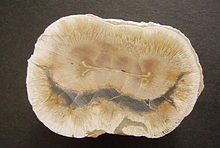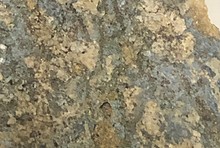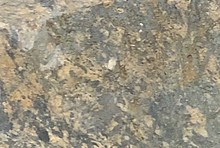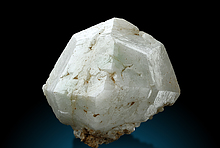Home PageAbout MindatThe Mindat ManualHistory of MindatCopyright StatusWho We AreContact UsAdvertise on Mindat
Donate to MindatCorporate SponsorshipSponsor a PageSponsored PagesMindat AdvertisersAdvertise on Mindat
Learning CenterWhat is a mineral?The most common minerals on earthInformation for EducatorsMindat ArticlesThe ElementsThe Rock H. Currier Digital LibraryGeologic Time
Minerals by PropertiesMinerals by ChemistryAdvanced Locality SearchRandom MineralRandom LocalitySearch by minIDLocalities Near MeSearch ArticlesSearch GlossaryMore Search Options
The Mindat ManualAdd a New PhotoRate PhotosLocality Edit ReportCoordinate Completion ReportAdd Glossary Item
Mining CompaniesStatisticsUsersMineral MuseumsClubs & OrganizationsMineral Shows & EventsThe Mindat DirectoryDevice SettingsThe Mineral Quiz
Photo SearchPhoto GalleriesSearch by ColorNew Photos TodayNew Photos YesterdayMembers' Photo GalleriesPast Photo of the Day GalleryPhotography
╳Discussions
💬 Home🔎 Search📅 LatestGroups
EducationOpen discussion area.Fakes & FraudsOpen discussion area.Field CollectingOpen discussion area.FossilsOpen discussion area.Gems and GemologyOpen discussion area.GeneralOpen discussion area.How to ContributeOpen discussion area.Identity HelpOpen discussion area.Improving Mindat.orgOpen discussion area.LocalitiesOpen discussion area.Lost and Stolen SpecimensOpen discussion area.MarketplaceOpen discussion area.MeteoritesOpen discussion area.Mindat ProductsOpen discussion area.Mineral ExchangesOpen discussion area.Mineral PhotographyOpen discussion area.Mineral ShowsOpen discussion area.Mineralogical ClassificationOpen discussion area.Mineralogy CourseOpen discussion area.MineralsOpen discussion area.Minerals and MuseumsOpen discussion area.PhotosOpen discussion area.Techniques for CollectorsOpen discussion area.The Rock H. Currier Digital LibraryOpen discussion area.UV MineralsOpen discussion area.Recent Images in Discussions
Mineralogical ClassificationType minerals from Brazil

9th Apr 2015 22:26 UTCDaniel Atencio
Daniel Atencio
Brazilian Journal of Geology v. 45, n. 1 (2015)
Minerals were seen merely as sources of chemicals:iron ore, copper ore, etc. However, minerals are not just chemicals associations, since they display crystal structures. These two featurestogether provide properties that can be technologically useful. Eventhough a mineral occurs in very small amount, which does not allow its extraction, it can serve as a model for obtaining the synthetic analogue on an industrial scale. It is necessary that a new-mineralproposal be submitted for approval by the Commission on New Minerals,Nomenclature and Classification (CNMNC) of the International Mineralogical Association (IMA) before publication. Only 65 valid mineral species were first described from Brazil, that is, the type minerals from Brazil. Nineteen of these were published between 1789 and 1959 (0.11 per year). From 1959, when the CNMMN (today CNMNC) – IMA was established, to 2000, 18 approved Brazilianmineral species remain valid (0.43 per year). However, the numberof type minerals from Brazil approved in the last 15 years (2000 to2014) was substantially increased: 28 (1.87 per year). This numberis very small considering the wide range of Brazilian geological environments.The two first type species from Brazil, discovered in the18th century, chrysoberyl and euclase, are important gemological minerals.Two other gem minerals, tourmaline-supergroup members, were published only in the 21st century: uvite and fluor-elbaite. Some type minerals from Brazil are very important technologically speaking.Some examples are menezesite, coutinhoite, lindbergite, pauloabibite, and waimirite-(Y).
download:
http://www.rbg.sbgeo.org.br/index.php/rbg/article/view/30242/19035
10th Apr 2015 08:38 UTCUwe Kolitsch Manager
10th Apr 2015 11:13 UTCMarco E. Ciriotti Manager

10th Apr 2015 12:40 UTCLászló Horváth Manager
10th Apr 2015 17:34 UTCRob Woodside 🌟 Manager

10th Apr 2015 20:05 UTCDoug Daniels
10th Apr 2015 21:10 UTCRui Nunes 🌟 Expert
Muito interessante o artigo. Obrigado pela partilha.
Um forte abraço do outro lado do Atlântico.
Rui

10th Apr 2015 21:18 UTCDaniel Atencio
I am very glad you enjoyed the paper.
All the best,
Daniel




Mindat.org is an outreach project of the Hudson Institute of Mineralogy, a 501(c)(3) not-for-profit organization.
Copyright © mindat.org and the Hudson Institute of Mineralogy 1993-2024, except where stated. Most political location boundaries are © OpenStreetMap contributors. Mindat.org relies on the contributions of thousands of members and supporters. Founded in 2000 by Jolyon Ralph.
Privacy Policy - Terms & Conditions - Contact Us / DMCA issues - Report a bug/vulnerability Current server date and time: April 23, 2024 11:15:23
Copyright © mindat.org and the Hudson Institute of Mineralogy 1993-2024, except where stated. Most political location boundaries are © OpenStreetMap contributors. Mindat.org relies on the contributions of thousands of members and supporters. Founded in 2000 by Jolyon Ralph.
Privacy Policy - Terms & Conditions - Contact Us / DMCA issues - Report a bug/vulnerability Current server date and time: April 23, 2024 11:15:23











